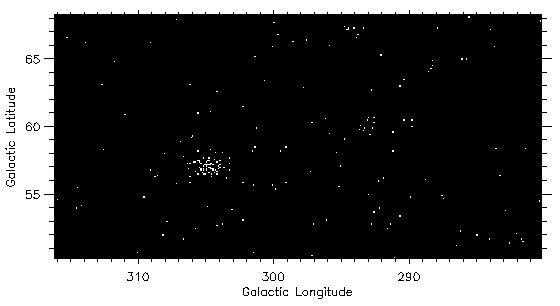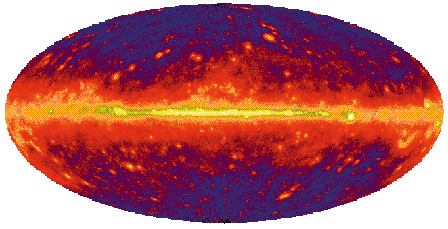
COMPTEL Map of Galaxy at 1.8 MeV

ABOVE: Determining the source of enhancements, obvious in this map of the 1.8 MeV gamma-ray line from 26Al, is a continuing project for the COMPTEL and OSSE experiments.
| How can theories created to separately explain bursters and pulsars be modified to explain this object? What will other wavelength bands tell us? Aside from surprises like GRO J1744-28, there are many other possible discoveries which await the final years of the Compton mission. In the next few years, a new supernova in a nearby galaxy is a possibility. Observations of gamma-ray lines will constrain models of explosive nucleosynthesis - the theory of how heavy elements are created in our galaxy. Additional observations of our own galaxy may reveal more areas of line emission which can probe the supernova rates in our own galaxy. Further mapping of the diffuse emission from our galaxy will provide crucial information regarding the transport and production of cosmic rays. | Other important studies that can be accomplished include deep observations at high galactic latitudes to detect ever fainter quasars, multiwavelength observations with ground-based observatories which will be used to further refine our understanding of gamma-ray emitting galaxies, the search for more hidden pulsars similar to Geminga, and collecting more and more gamma-ray bursts in the hope that we can constrain models of gamma-ray burst emission. |


A simulated comparison of the Virgo region which contains 3C 279 as seen above 1 GeV by EGRET (top) as compared to GLAST (bottom). The development of better telescopes is driven by the need to explain current results.

The simulated all-sky view as seen by the proposed GLAST experiment. The detail in a one-year mission is greatly enhanced over the EGRET results.